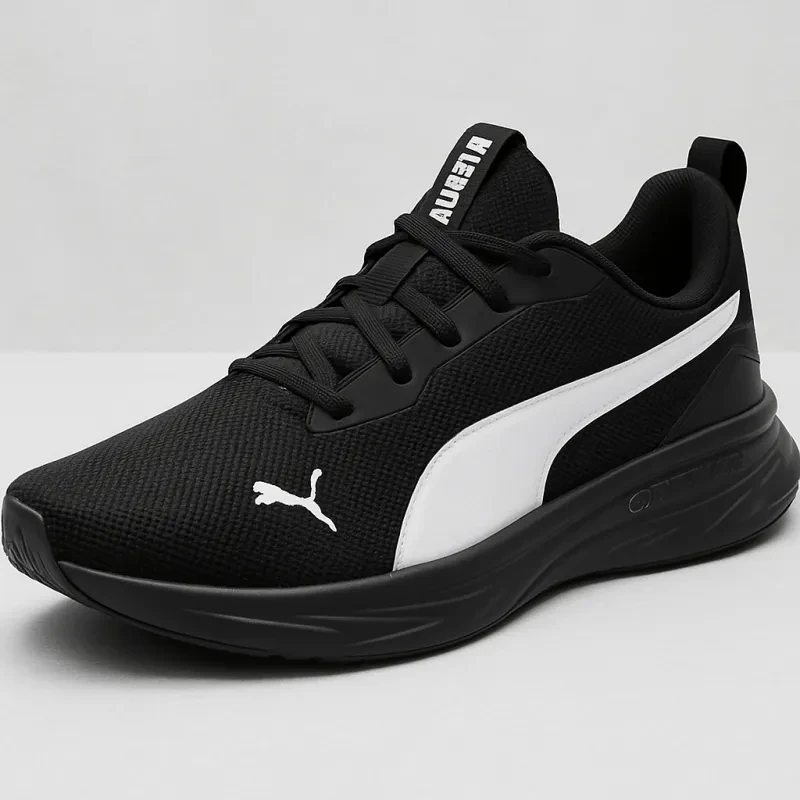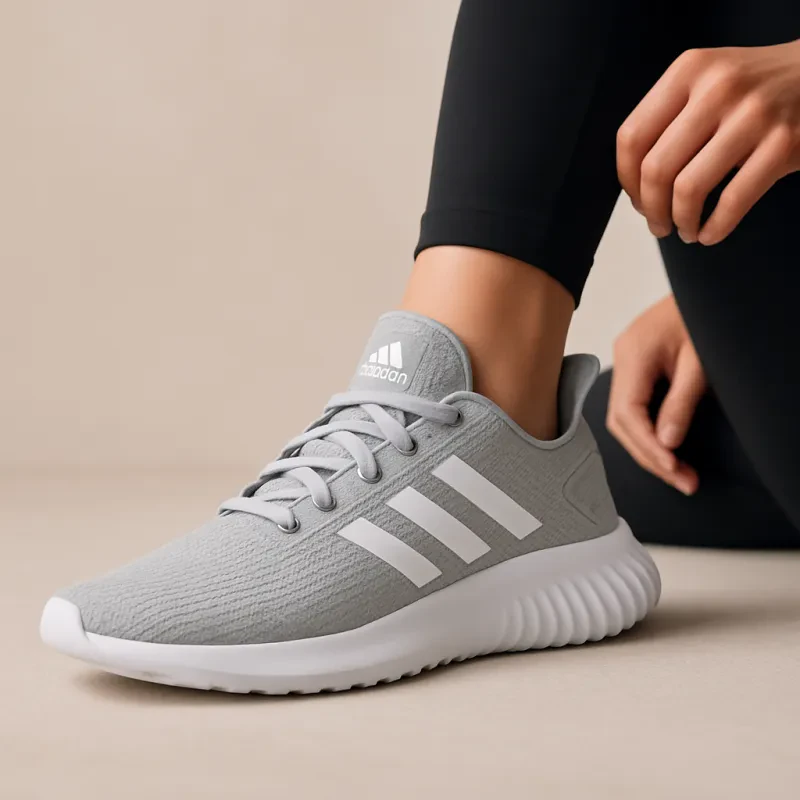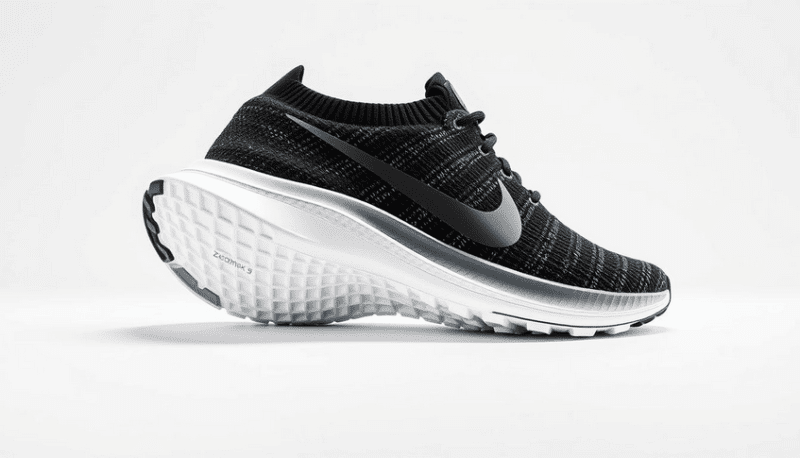Nursing is a demanding profession that requires healthcare professionals to be on their feet for long hours. For nurses dealing with plantar fasciitis, finding the right footwear is crucial to manage pain and stay comfortable throughout shifts. This painful foot condition affects many in the healthcare field due to the nature of their work.

Based on expert reviews and user feedback, the best shoes for nurses with plantar fasciitis include the Brooks Addiction 15, Brooks Adrenaline GTS 22/23, Skechers Arch Fit 2.0, and ASICS Gel-Venture 10. These options provide excellent arch support, cushioning, and heel stability—all essential features for managing plantar fasciitis symptoms while working long hours on hospital floors.
When selecting nursing shoes, look beyond style and focus on functionality. The ideal footwear should offer proper arch support, adequate cushioning, and a supportive heel counter. These features help distribute pressure evenly across the foot and reduce strain on the plantar fascia during those 12-hour shifts.
Key Takeaways
- Shoes with excellent arch support and cushioning, like Brooks Addiction and Skechers Arch Fit models, provide relief for nurses with plantar fasciitis.
- Look for key features including proper arch support, heel stability, and cushioning when selecting nursing footwear.
- Regular footwear replacement and using supportive insoles can help maintain foot health throughout your nursing career.
Understanding Plantar Fasciitis in Nurses
Plantar fasciitis is a common foot condition affecting many healthcare professionals who spend long hours on their feet. The condition involves inflammation of the plantar fascia, a thick band of tissue that connects the heel bone to the toes.
Causes and Symptoms
Plantar fasciitis develops when the plantar fascia experiences excessive strain and becomes inflamed. For nurses, several factors contribute to this condition:
- Standing for 12+ hour shifts
- Walking on hard hospital floors
- Inadequate arch support in footwear
- Weight gain or obesity
- Flat feet or high arches
The primary symptom is sharp, stabbing heel pain that's typically worst with the first steps in the morning. Many nurses report intense discomfort after sitting for extended periods, then standing up. The pain often decreases with activity but returns after long periods of standing.
Foot pain may also radiate along the bottom of the foot. Some nurses describe it as feeling like a bruise or ache in the heel.
Impact on Nursing Professionals
Plantar fasciitis significantly affects nurses' work performance and quality of life. The persistent foot pain can lead to:
- Reduced mobility and efficiency during shifts
- Compensatory posture changes that cause knee, hip, or back pain
- Increased fatigue and decreased job satisfaction
- Potential need for time off work
We find that many nurses push through the pain due to staffing shortages and dedication to patient care. This often worsens the condition and prolongs recovery time.
The discomfort can become debilitating, affecting not just work duties but also personal activities and overall well-being.
Importance of Proper Footwear
Appropriate nursing shoes play a crucial role in both preventing and managing plantar fasciitis. Key features to look for include:
Essential shoe features:
- Strong arch support to maintain proper foot alignment
- Cushioned midsoles to absorb shock
- Deep heel cups for stability
- Roomy toe boxes to prevent compression
Wearing supportive shoes helps distribute pressure evenly across the foot, reducing strain on the plantar fascia. The right footwear can significantly decrease foot pain during long shifts.
Investing in quality nursing shoes is not merely a comfort choice—it's essential to foot health maintenance and career longevity. Proper shoes can prevent the development of plantar fasciitis or reduce symptoms in those already affected.
Key Features to Look for in Shoes for Nurses with Plantar Fasciitis
When selecting shoes for plantar fasciitis, nurses need to focus on specific features that provide proper support and pain relief during long shifts. The right combination of arch support, cushioning, and fit can make a significant difference in comfort levels.
Arch Support and Stability
Proper arch support is crucial for nurses with plantar fasciitis. Look for shoes with built-in arch support that matches your foot type. High arches need more cushioning, while flat feet require firmer support to prevent overpronation.
Many nursing shoes now offer customizable or removable arch supports. These allow you to adjust the level of support as your condition improves or changes throughout the day.
Stability features like firm heel counters help control motion and reduce strain on the plantar fascia. A supportive midsole that doesn't twist easily provides the structure needed to keep your foot properly aligned during long periods of standing.
Some brands design shoes specifically with plantar fasciitis in mind, incorporating extra support in the midfoot area where the plantar fascia experiences the most tension.
Shock Absorption and Cushioning
Shock absorption is essential for reducing impact forces that can aggravate plantar fasciitis. Look for shoes with thick, responsive midsoles that absorb the shock of each step.
Materials like EVA (ethylene vinyl acetate) and gel inserts are excellent for cushioning. They provide a balance of softness and support that helps distribute pressure evenly across the foot.
The heel area should have extra cushioning since this is where plantar fasciitis pain often concentrates. Some nursing shoes feature specialized heel cups or targeted cushioning in this area.
A moderate heel-to-toe drop (the difference in height between heel and toe) can also help by reducing tension on the plantar fascia. Many supportive shoes have a drop between 4-12mm.
We recommend avoiding completely flat shoes or those with minimal cushioning, as they typically don't provide enough impact protection for nurses who stand all day.
Cushioned Insole and Footbed
The insole is your foot's direct contact point with the shoe, making it critically important for comfort. Memory foam insoles conform to your foot's unique shape, providing personalized support where you need it most.
Contoured footbeds that match the natural shape of the foot help distribute weight evenly. This prevents pressure points that can worsen plantar fasciitis pain.
Many quality nursing shoes feature removable insoles. This is valuable because it allows you to:
- Replace the original insole with custom orthotics
- Wash insoles separately to maintain hygiene
- Upgrade to specialized plantar fasciitis insoles
Premium footbeds often incorporate antimicrobial properties to control odor a practical feature for the healthcare environment. Some also include moisture-wicking capabilities to keep feet dry during long shifts.
Roomy Toe Box and Fit
A roomy toe box allows toes to spread naturally, improving balance and reducing pressure on the rest of the foot. This natural toe positioning helps maintain proper foot mechanics and can reduce strain on the plantar fascia.
Avoid shoes that pinch or compress your toes. Your toes should be able to wiggle freely without hitting the front or sides of the shoe.
Proper fit extends beyond just length width matters too. Many nursing shoe brands offer multiple width options (narrow, regular, wide, extra-wide) to accommodate different foot shapes.
Secure closures like laces or adjustable straps ensure the shoe stays firmly in place. This prevents your foot from sliding forward and compressing your toes, which can increase stress on the plantar fascia.
We suggest trying shoes on later in the day when feet are typically more swollen similar to how they might feel at the end of a nursing shift.
Top-Rated Shoes for Nurses with Plantar Fasciitis
Finding the right shoes can make a huge difference for nurses dealing with plantar fasciitis. The best options provide excellent arch support, cushioning, and stability to reduce pain during long shifts.
Best Overall Shoes
Hoka One One tops our list for nurses with plantar fasciitis. These shoes feature exceptional arch support and cushioning that helps distribute pressure evenly across the foot.
The Orthofeet Coral Stretch Knit is another excellent choice. Its anatomical arch support and cushioned heel pad help reduce strain on the plantar fascia. Many nurses report significant pain reduction after switching to these.
Brooks shoes, especially the Ghost Max 2, provide perfect support and comfort. They include plush cushioning and responsive midsoles that help absorb impact during long hours of standing.
Nurse Mates Align deserves special mention for its built-in orthotic support. These shoes are specifically designed for healthcare professionals and include features that address plantar fasciitis pain.
Best Cushioned Shoes
New Balance offers several models with plush cushioning that nurses love. Their Fresh Foam technology provides excellent shock absorption that eases pressure on the heel.
Skechers Arch Fit 2.0 features a podiatrist-designed insole system that provides excellent support. The memory foam cushioning conforms to your foot, making it ideal for 12-hour shifts.
The new CloudTilt shoes use innovative cushioning technology that responds to your movements. This adaptive support is particularly helpful for nurses constantly moving between different surfaces.
Asics gel cushioning systems excel at impact absorption. Their shoes provide targeted support in the heel area where plantar fasciitis pain is most intense.
Most Durable Shoes
Dansko Clogs have earned a reputation for exceptional durability while providing the support nurses need. Their firm arch support and rocker bottom design help reduce strain on the plantar fascia.
The reinforced toe boxes and slip-resistant outsoles make them practical for hospital environments. Many nurses report their Danskos lasting 2-3 years, even with daily wear.
Alegria Debra shoes feature replaceable footbeds and sturdy leather uppers that withstand the demands of nursing. The memory foam, cork, and latex footbed mold to your foot's shape over time.
Vionic shoes incorporate Orthaheel technology that lasts through extended wear. Their firm but flexible support helps maintain proper foot alignment even after months of continuous use.
Additional Considerations for Foot Comfort and Health
Beyond choosing the right shoes, there are several ways to improve foot comfort for nurses with plantar fasciitis. These additional measures can help reduce pain and prevent worsening of symptoms during long shifts.
Custom Orthotics and Insoles
Custom orthotics provide targeted support that regular shoe insoles may not offer. After a podiatrist examines your gait and foot structure, these devices are made specifically for your feet.
Over-the-counter insoles can also be helpful and cost less than custom options. Look for insoles with firm arch support and deep heel cups to stabilize your foot. Many brands like Superfeet, PowerStep, and Dr. Scholl's make insoles designed for plantar fasciitis.
We recommend removing the factory insoles from your nursing shoes before adding custom orthotics. This ensures proper fit and prevents crowding your toes.
Replace insoles every 6-12 months as they wear down and lose their supportive properties. Even the best insoles become less effective with regular use.
Use of Compression Socks
Compression socks improve blood circulation in your feet and legs during long shifts. This increased blood flow can reduce inflammation around the plantar fascia.
The best compression socks for nurses offer graduated pressure, with tighter compression at the ankle gradually decreasing up the leg. For daily use, look for compression levels between 15-20 mmHg.
Moisture-wicking materials in compression socks keep feet dry and prevent blisters. This is especially important when dealing with plantar fasciitis pain.
We've found that knee-high compression socks work best for most nurses. They provide full calf support while preventing the socks from rolling down during movement.
Fluid-Resistant and Slip-Resistant Options
Fluid-resistant shoes protect feet from spills common in healthcare settings. These shoes have special coatings or materials that repel liquids, keeping feet dry.
Slip-resistant soles are crucial for safety in hospital environments. Look for shoes with rubber outsoles featuring tread patterns designed to grip wet floors.
Many nursing shoe brands combine fluid resistance with slip resistance. Dansko, Crocs Professional, and Calzuro offer options that meet both needs while supporting plantar fasciitis.
We recommend wiping down fluid-resistant shoes regularly with disinfectant wipes. This maintains their protective qualities and extends their lifespan.
Choose shoes with sealed seams to prevent liquid penetration at connection points. This feature adds another layer of protection in healthcare settings.
Tips for Maintaining Foot Health in the Nursing Profession
Proper foot care is essential for nurses who spend long hours on their feet. Beyond choosing the right shoes, implementing specific practices can significantly reduce discomfort and prevent conditions like plantar fasciitis from developing or worsening.
Stretching and Exercise
Regular foot exercises are crucial for maintaining foot health during nursing shifts. We recommend performing calf stretches by leaning against a wall with one leg extended behind you, holding for 30 seconds on each side.
Toe curls strengthen the muscles that support your arch. Try picking up small objects with your toes or scrunching a towel with your feet for 1-2 minutes daily.
Rolling a tennis ball or frozen water bottle under your foot for 5 minutes helps massage the plantar fascia and reduce inflammation. This is especially beneficial after long shifts.
Ankle rotations improve circulation and flexibility. Perform 10 circles in each direction while seated during breaks.
Quick morning routine: Before leaving bed, flex and point your feet 10 times to prepare your plantar fascia for weight-bearing activity.
Managing Long Shifts
Taking micro-breaks every 2-3 hours allows your feet to recover. Even a 2-minute seated rest can improve circulation and reduce fatigue.
Compression socks provide valuable support during long nursing shifts. Look for graduated compression of 15-20 mmHg to improve blood flow and reduce swelling.
If possible, alternate shoes between shifts. This gives footwear time to regain cushioning and helps prevent repetitive stress on the same areas of your feet.
Proper hydration affects foot health, too. Drinking adequate water helps prevent swelling in the feet and ankles during long shifts.
Elevate your feet whenever possible during breaks. Even a 5-minute elevation can help reduce inflammation and improve circulation to tired feet.
Frequently Asked Questions
Nurses with plantar fasciitis need specific details about shoe features, brands, and models that can help reduce pain during long shifts. These questions address the most common concerns for female and male nurses seeking relief.
What features should nurses look for in shoes to alleviate plantar fasciitis symptoms?
Nurses should prioritize shoes with excellent arch support and cushioning to reduce heel pain. Look for deep heel cups that stabilize the foot and prevent excessive pronation.
Shock absorption is crucial for reducing impact on hard hospital floors. Choose shoes with thick, supportive midsoles made of materials like EVA foam or gel cushioning.
Slip-resistant outsoles are non-negotiable in healthcare settings where spills happen regularly. The right shoe should also have a roomy toe box to prevent foot compression during long shifts.
How do female nurses choose the best footwear for plantar fasciitis relief while on long shifts?
Female nurses should measure their feet at the end of a shift when they're most swollen. This ensures proper sizing that accommodates foot expansion during 12-hour workdays.
Consider shoes with adjustable features like laces or straps that can be loosened as needed. Many female nurses benefit from shoes with a slight heel-to-toe drop that reduces pressure on the plantar fascia.
Lightweight options prevent added fatigue during long shifts. We recommend trying on multiple styles as women's feet often have unique support needs that vary from person to person.
Which shoe brands are most recommended for nurses suffering from plantar fasciitis?
Dansko leads the recommendations for nursing professionals, especially their XP 2.0 clogs. These shoes are popular among healthcare workers who stand for hours because of their superior support.
New Balance trail shoes offer exceptional stability and cushioning that nurses need. Hoka and Brooks consistently rank high for their therapeutic designs and comfort features.
Brands like KURU specifically engineer shoes to address plantar fasciitis with patented heel technology. Nurses should also consider Asics, Saucony, and Altra for their supportive features.
Are there specific shoe models from Hoka that cater to nurses with plantar fasciitis?
The Hoka Bondi 8 is particularly well-suited for nurses with plantar fasciitis. It features a wide toe box that allows toes to spread naturally while providing maximum cushioning for long shifts.
Hoka Clifton models offer a balance of support and lightweight design that prevents fatigue. The Arahi series provides stability while maintaining the brand's signature cushioning.
These shoes have a meta-rocker design that promotes natural foot movement and reduces strain on the plantar fascia. Many nurses appreciate the roomy fit that accommodates custom orthotics if needed.
What Brooks footwear options are most supportive for nursing professionals with plantar fasciitis?
The Brooks Addiction Walker excels in providing motion control and stability for nurses with plantar fasciitis. Its slip-resistant outsole makes it particularly suitable for hospital environments.
Brooks Adrenaline GTS models offer GuideRails support, which keeps excess movement in check. The Ghost series provides neutral support with ample cushioning, which nurses need during long shifts.
These shoes have earned praise for their durability, essential for the demanding nursing environment. The extended size range accommodates various foot widths for optimal comfort.
What are the considerations for male nurses when selecting shoes to reduce plantar fasciitis discomfort?
Male nurses should look for shoes with reinforced heel counters that stabilize and prevent slippage. Wider width options are important as men's feet tend to be broader.
Durability is crucial as male nurses may put different weights and wear patterns on their shoes. Many men benefit from shoes with removable insoles that allow for custom orthotics.
Weight distribution features help reduce pressure points that can aggravate plantar fasciitis. We recommend male nurses consider more structured shoes that maintain their supportive properties over time.



